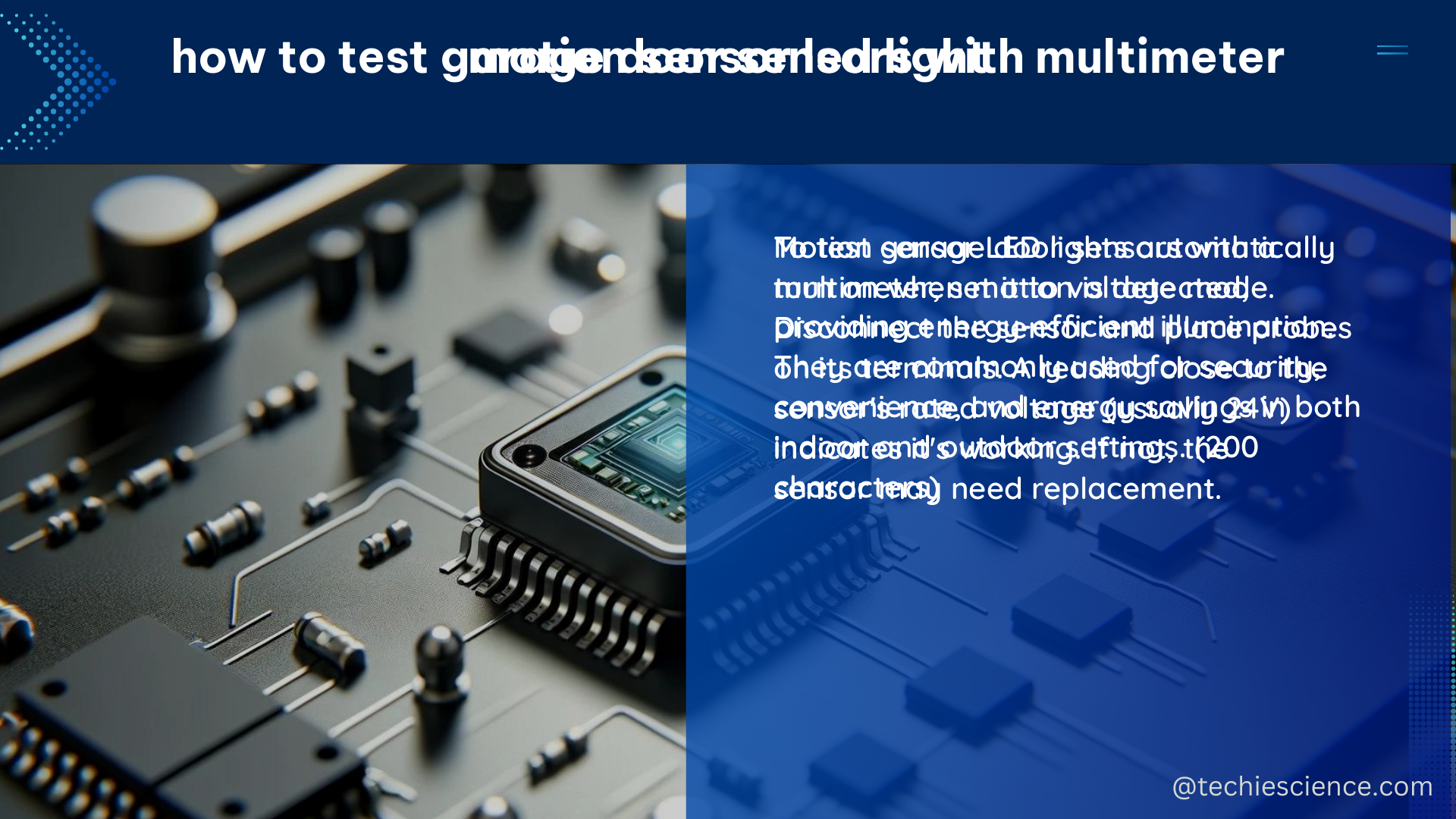Motion sensor LED lights are a cutting-edge lighting solution that combine energy efficiency, advanced technology, and user-friendly features. These innovative systems utilize motion sensors to detect movement and automatically turn on the lights, making them an ideal choice for a wide range of applications, from residential to commercial settings.
Understanding the Luminous Efficacy of Motion Sensor LED Lights
One of the key aspects of motion sensor LED lights is their impressive luminous efficacy, which is a measure of how efficiently a light source converts electrical energy into visible light. The luminous efficacy of solid-state lighting (SSL) technologies, such as motion sensor LED lights, has been steadily advancing, with the practical limit reaching an astounding 255 lumens per watt (lm/W) for phosphor-converted LED architectures.
This remarkable efficiency means that motion sensor LED lights are capable of producing more visible light per unit of energy consumed, resulting in significant energy savings and reduced operating costs. In fact, the latest generation of motion sensor LED lights can achieve luminous efficacy values as high as 200 lm/W, making them significantly more efficient than traditional lighting technologies, such as incandescent or halogen bulbs.
Improving Lighting Application Efficiency (LAE)

In addition to their impressive luminous efficacy, motion sensor LED lights also excel at improving lighting application efficiency (LAE). LAE is a measure of how effectively the light produced by a source is delivered to the intended task or area, taking into account factors such as the light spectrum, the ability to adjust light output based on motion, and the overall efficiency of the lighting system.
Motion sensor LED lights are designed to optimize LAE by actively adjusting the light output based on the presence of motion. This ensures that the lights are only on when they are needed, further reducing energy consumption and costs. Additionally, the advanced light spectrum of motion sensor LED lights can be tailored to specific applications, ensuring that the light is optimized for the task at hand, whether it’s illuminating a workspace, a hallway, or an outdoor area.
Technical Specifications of Motion Sensor LED Lights
When it comes to the technical specifications of motion sensor LED lights, there are several key features to consider:
Detection Range
Motion sensor LED lights typically have a detection range of up to 15 feet, allowing them to effectively cover a wide area and ensure that the lights are only activated when necessary.
Detection Angle
The detection angle of motion sensor LED lights can reach up to 120 degrees, providing a broad coverage area and ensuring that the lights are triggered by movement in a variety of directions.
Mounting Options
Motion sensor LED lights offer a variety of mounting options, including screw-mount, adhesive-mount, and hardwire-mount, allowing for flexible installation in a range of settings.
Adjustable Sensitivity
Many motion sensor LED lights feature adjustable sensitivity settings, enabling users to customize the motion detection to their specific needs and preferences, further optimizing energy efficiency and reducing unnecessary light activation.
DIY Motion Sensor LED Light Projects
For those interested in exploring the world of motion sensor LED lights through DIY projects, there are numerous resources available online. One particularly notable example is the “Motion Sensor LED Light” project on the Instructables website, which provides detailed instructions on how to build a custom motion sensor LED light using an Arduino board, a motion sensor, and an LED light.
This project is an excellent way for DIY enthusiasts to delve into the inner workings of motion sensor LED lights, learning about the various components, programming, and assembly required to create a fully functional system. By engaging in such hands-on projects, individuals can gain a deeper understanding of the technology behind motion sensor LED lights and explore the possibilities of customizing and optimizing these systems to suit their specific needs.
Conclusion
Motion sensor LED lights represent a cutting-edge lighting solution that combines energy efficiency, advanced technology, and user-friendly features. With their impressive luminous efficacy, optimized lighting application efficiency, and a range of technical specifications, these innovative systems offer a versatile and practical lighting solution for a wide variety of applications.
Whether you’re a homeowner looking to upgrade your lighting system, a business owner seeking to reduce energy costs, or a DIY enthusiast interested in exploring the world of motion sensor LED lights, this comprehensive guide has provided you with the essential information and resources to make informed decisions and take your lighting experience to new heights.
References:
- 2019 Solid-State Lighting R&D Opportunities – Department of Energy
- Wearable Sweat Biosensors Refresh Personalized Health/Medical …
- Motion Sensor LED Light – Instructables

The lambdageeks.com Core SME Team is a group of experienced subject matter experts from diverse scientific and technical fields including Physics, Chemistry, Technology,Electronics & Electrical Engineering, Automotive, Mechanical Engineering. Our team collaborates to create high-quality, well-researched articles on a wide range of science and technology topics for the lambdageeks.com website.
All Our Senior SME are having more than 7 Years of experience in the respective fields . They are either Working Industry Professionals or assocaited With different Universities. Refer Our Authors Page to get to know About our Core SMEs.